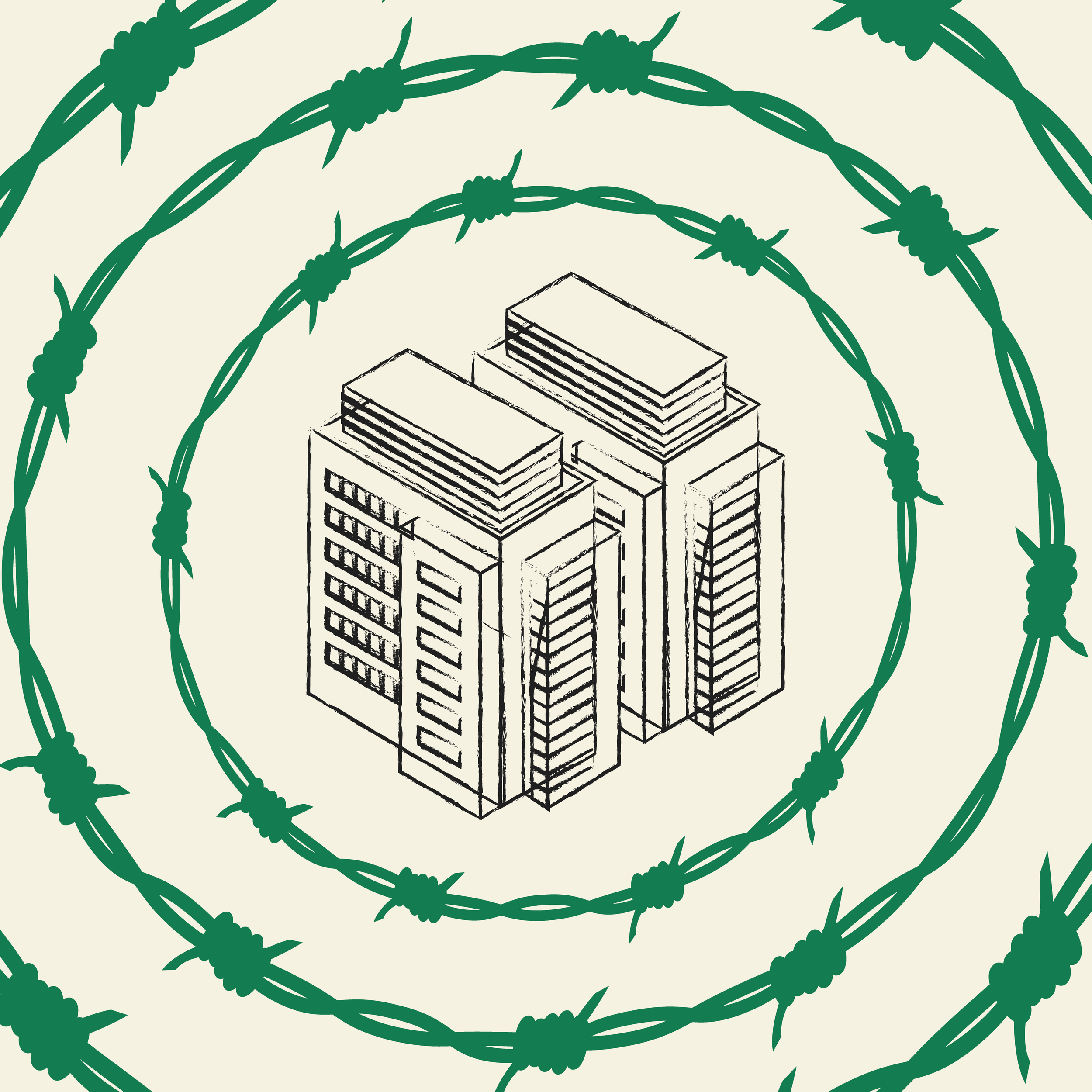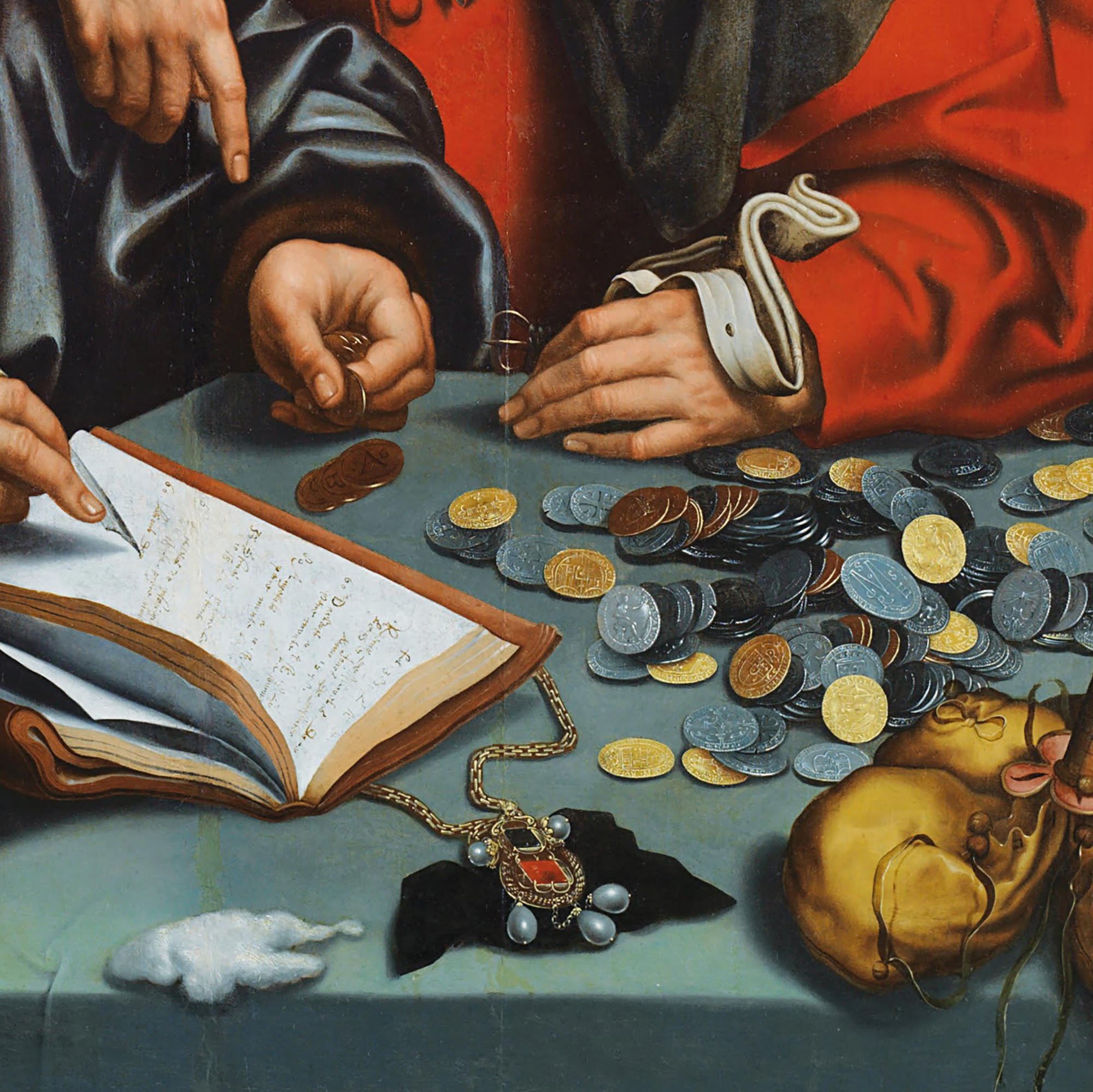The Black Zero
Germany reappraises its financial fetish.
JUNE 13, 2023
This article is co-published with Foreign Policy.
In 2017, when Wolfgang Schäuble left his post as the German finance minister to become president of the country’s parliament, hundreds of ministry employees took a group photo to mark his departure. Standing in the ministry’s courtyard and dressed in black jackets, they formed a giant circle, a zero symbol, to honor the man seen as the face of German austerity measures. The “black zero,” or schwarze Null, is a reference to the requirement for balanced budgets enshrined in the German Constitution since 2009: Barring extraordinary circumstances, the Schuldenbremse, or “debt brake,” forbids the German government from taking on additional debts and limits Germany’s structural deficit to no more than 0.35 percent of annual GDP. Together, the two terms have formed the foundation of German fiscal policy since the 2008 financial crisis.
“Yes, we admit we have a little fetish: solid finances without new debts!” the post read. “We stand by our fetish!”
The black zero has been such an integral part of Germany’s approach to its finances that it has attained a mythical, and in certain settings, almost comical symbolic status. Members of the pro-business Free Democratic Party (FDP) presented the center-left Social Democratic Party (SPD) state premier of Lower Saxony with a dark-chocolate cake shaped like the black zero for his birthday in 2015, intended as a not-so-subtle dig at his less constrained budget priorities. In 2014, the SPD finance minister for the state of Baden-Württemberg posed with a large cardboard cutout of a black zero to celebrate the state not taking on any new debts that year. And in a 2019 social media post, the conservative Christian Democratic Union (CDU) posted an image of the black zero wearing a black leather fetish cap: “Yes, we admit we have a little fetish: solid finances without new debts!” the post read. “We stand by our fetish!”
The longtime fixation on the black zero illustrates the extent to which a dislike for debt is deeply ingrained in German politics and society. This is true on an individual level (many people rent rather than buy homes, credit cards are less widely used, and saving money is seen as a virtue), on a state and national level (through codified measures such as the debt brake) and on a European Union level (during the eurozone crisis, Germany built up a reputation as the bloc’s biggest backer of austerity measures). This attitude is even reflected linguistically: The word for debt, Schuld, literally means “guilt.”
But after facing the back-to-back crises of the COVID-19 pandemic and Russia’s war in Ukraine, Germany has moved away from its signature fiscal policy — at least temporarily. In 2020, after eight years of balanced budgets (from 2012 to 2019), bringing its total debt from around 80 percent of annual GDP down to 60 percent, then-Chancellor Angela Merkel announced the country was ready to abandon the black zero and spend heavily to offset the economic impact of the virus. As the impacts of climate change become clearer, some in German politics — especially the Greens — have also argued that it should be treated as an urgent problem requiring the same level of investment as the pandemic and the war.
Today, German politicians are engaging in new discussions about whether it is time to rethink not only their country’s approach to debt, but also the role of the state in preparing for and weathering disasters.
“If the [German] government was honest, it would realize we are in a more or less permanent state of crisis … that we have huge transformations ahead of us, and it’s not optional,” said Marcel Fratzscher, the president of the German Institute for Economic Research. “It’s not whether or not we do it, it’s whether we do it more quickly and therefore more successfully and ultimately more cheaply, or do it more slowly, which will ultimately be much more damaging.”
Today, German politicians are engaging in new discussions about whether it is time to rethink not only their country’s approach to debt, but also the role of the state in preparing for and weathering disasters. Many German economists have seen the past three years as an exception, wanting Germany to reinstitute the debt brake as soon as possible; they argue that the government was able to spend so freely during the pandemic precisely because it had been frugal in the years preceding it.
“It was good that governments responded with expansionary fiscal policy. However, the war in Ukraine gave rise to the next crisis and expansionary fiscal policy,” said Niklas Potrafke, an economist with the Munich-based Ifo Institute for Economic Research. “I am concerned that the pandemic and the war in Ukraine induced an attitude that the size and scope of the government can increase forever. Governments need to consider consolidation strategies.”
But the debate has also given rise to voices who say Germany’s approach to fiscal policy is both wrong and, in the long run, damaging for the country. They would like to see a fundamental shift in the way Germany approaches its national debt, issuing new debt to invest in the future in projects such as updating the country’s aging infrastructure, rapidly building out a carbon-neutral energy system, and adapting to climate change.
Philippa Sigl-Glöckner, an economist originally from Munich, is one of them. After studying in the United Kingdom, working for the World Bank in Liberia, and spending two years as a bureaucrat in Germany’s Finance Ministry, she now leads a Berlin-based think tank, Dezernat Zukunft, that aims to change the conversation about government debt and sovereignty in Germany. To Sigl-Glöckner, the debate about Germany’s relationship with debt raises fundamental questions about the role of the state at a time when countries are facing unprecedented long-term challenges, such as climate change. What if, for example, the benchmark for a country’s fiscal stability were its fundamental values and metrics for the future, rather than its debt-to-GDP ratio? “We have it upside down at the moment: Debt to GDP is constrained, and CO2 [carbon dioxide] emissions are not,” Sigl-Glöckner said. “Fiscal policy, the whole financial and monetary system, should always follow our societal goals—that’s what it’s there for. And for some reason, we’ve managed to flip this around.”
While studying philosophy, politics, and economics at Oxford University in the United Kingdom, she felt a cognitive dissonance between what she was taught in her philosophy classes (that Western societies were founded on universal values such as democracy and human dignity) and the lessons from her macroeconomics classes (that the market is immutably in charge). “We have this normative idea and pretty strong consensus of what’s right, and then you do something different, and we say, ‘Sorry, this is like gravity, we can’t change it,’” she said. “But actually, it’s a social institution created by us … money is created by people.”
Sigl-Glöckner and her colleagues envision a revision of Germany’s debt brake, allowing the country to take on new debt to finance big-picture, long-term investments in infrastructure and public assets. The exact parameters of the reforms are up for debate, but they argue an amended debt brake could be based not on the percentage of debt to GDP, but rather on a metric such as the percentage of Germany’s infrastructure that is carbon neutral. This adjustment would allow the country to take on more debt to fund ambitious, much-needed projects. Through regular policy papers, interviews, and speeches, Sigl-Glöckner and her colleagues aim to take the debate out of policymaker circles and into the broader public—a tall order with a subject as opaque and complex as fiscal policy.
She noted that there is a fundamental difference between private debt and government debt: Private debt, like a loan on a home or a car, must be paid back under certain terms, or the person who took out the debt can face steep penalties. Governments, however, can issue debt in ways that don’t require it to be paid back — and governments like Germany’s, which have typically been able to do so at low interest rates, therefore have an opportunity to finance serious investments in the future.
Sigl-Glöckner returned to Germany from her World Bank post in Liberia in 2018, taking up a post in the Finance Ministry to better understand whether and how it would be possible to change the country’s approach to debt. Her experience in Liberia — where the government’s ability to pay back its debts is heavily reliant on the price of its main export, rubber — put Germany’s relative lack of such constraints in sharper focus. She found that certain assumptions about fiscal policy — that debt is bad and should be avoided as much as possible; a country’s debt should be limited to a certain percentage of its GDP — are so deeply ingrained that they are taken for granted, without real room for debate. “Limiting your debt is like an immutable, physical law. All these really big macro questions were completely taken out of the equation and turned into fundamental truths that are reflected in laws, reports, all of that.”
There are historical reasons for this attitude. The most-cited example is hyperinflation of the 1920s, although some economists question whether it’s the most salient reason for Germany’s attitude today: When the Weimar-era government printed more money to cover its debts and post-World War I reparations payments, the German mark lost nearly all its value, impoverishing much of the German population. The phenomenon is thought to have led to the rise of the Nazi Party in the late 1920s and early 1930s.
But German attitudes toward debt have their roots even further back than that, noted Fratzscher, of the German Institute for Economic Research. Germany was home to one of the first savings banks in the world, which opened in Hamburg in 1778. And before the country was unified in 1871, it was made up of smaller regional kingdoms and states that, over the centuries, fought in many wars. These wars were typically financed by savings, and accordingly, saving money was already seen as a virtue. After the devastation of World War II, the German government encouraged citizens to save their money — promoting the construction of social housing and rental buildings to help rebuild the country quickly, creating a culture where the majority of people rented rather than bought their homes and apartments.
Throughout the crisis and its aftermath, Merkel referred to the idea of a money-saving “Swabian housewife,” from the southwestern German region of Swabia, as an ideal model of financial responsibility.
The legacy of those policies remains today. Germany has one of the lowest home ownership rates in Europe: In 2021, just under 50 percent of Germans owned their homes, compared with figures as high as 95 percent in Romania and 66 percent in the United States. During the eurozone crisis in the aftermath of the 2008 financial collapse, Germany earned a reputation as the EU’s most miserly member, pushing austerity measures for its southern European neighbors. (Throughout the crisis and its aftermath, Merkel referred to the idea of a money-saving “Swabian housewife,” from the southwestern German region of Swabia, as an ideal model of financial responsibility. “She would have told us a piece of wisdom: You can’t live beyond your means in the long run,” Merkel famously said in 2008.)
That undercurrent throughout modern German history makes the challenges to that debt orthodoxy of the past three years even more notable. In 2020, the German government took on an additional 275 billion euros (nearly $300 billion) in new debt to finance various pandemic-related initiatives, including short-term work benefits for many of the country’s out-of-work employees. Then, just as the pandemic was receding in 2022, Russia invaded Ukraine. Declaring it a Zeitenwende, or a “turning point,” in German foreign and security policy, Chancellor Olaf Scholz announced a special fund of 100 billion euros ($107 billion) to modernize the German military and bring the country up to the policy of 2 percent annual spending on defense that was pledged by NATO members.
And last fall, the German parliament voted to suspend the debt brake in order to pass a 200 billion euro ($214 billion) spending package to help ease the sting of inflation and rising energy prices brought on by Russia’s war in Ukraine. “The foundation for electricity and gas price brakes and other support has been created,” FDP Finance Minister Christian Lindner, a staunch defender of the debt brake who has consistently sought to limit the new government’s spending, wrote on Twitter at the time. “In this energy war, we must use our economic strength to sustain it.” (As of this year’s budget, the debt brake had been restored.)
The question now is what comes next. Will Germany revert to its pre-coronavirus approach, or have the past three years provided an opportunity to make significant changes? Steffen Murau, a Berlin-based political economist with the Global Climate Forum, sees the current government—a three-way coalition between the SPD, Greens, and FDP — as a representation of the fundamental debates about German fiscal ambition versus restraint. On the one side are politicians and policymakers such as Lindner and the two conservative parties in opposition—the CDU and its Bavarian sister party, the Christian Social Union — who say the debt brake exists for a reason, and that Germany should spend within the confines of that constitutional rule. The others have argued for varying reforms to the debt brake to allow for key investments, especially to prepare for a carbon-neutral future. At the moment, the two camps “are sort of neutralizing each other, which is obviously a bit frustrating to watch,” said Murau. “But on the other hand, it’s probably representative of the existing tensions within Germany, and so maybe it’s also good that it’s been internalized into the government, and they’re trying to deal with it.”
On both the German and the European level, Murau said political debates talk a big game about cutting debt but often make policy decisions that increase it. There are ways for governments to issue and take on debts beyond their main federal budgets, and leaders have used these to circumvent rules on budget deficits. The 100 billion euros pledged toward the German military, for example, was considered a one-time special fund to accomplish a given objective. These kinds of funds have also been used to overhaul the German postal and railway systems. “There’s a discrepancy between the debt discourse and what really happens,” he said. “The rule was that you’re not allowed to get more debt on treasury balance sheets, on the main public budgets. But you create all sorts of new vehicles where you can do that nevertheless … you just put it in these alternative budgets.”
Even though creating special funds for everything isn’t necessarily feasible, Murau said that using them for projects such as building out Germany’s renewable energy systems or revitalizing its aging infrastructure could be one way around the debt brake. Whether to enact such a fund then becomes a question of political will, and whether the current governing coalition could find a consensus to put these investments into place.
Whether fundamental structural change is possible in a country that tends to favor incremental steps and cautious policy is far from certain. But Sigl-Glöckner believes that the discussion is already beginning to shift: Even the fact that Lindner supported temporarily suspending the debt brake was a sign that today’s policymakers are potentially open to changes. She hopes that there will come a day when Germany’s attitudes could lead the way for a shift on the EU level as well — and encourage a broader transformation across the continent. “If Germany changed, I think that would change pretty much everything,” she said.




